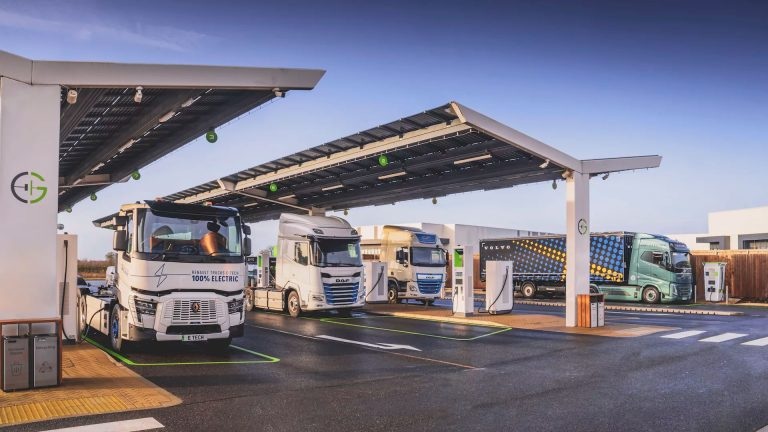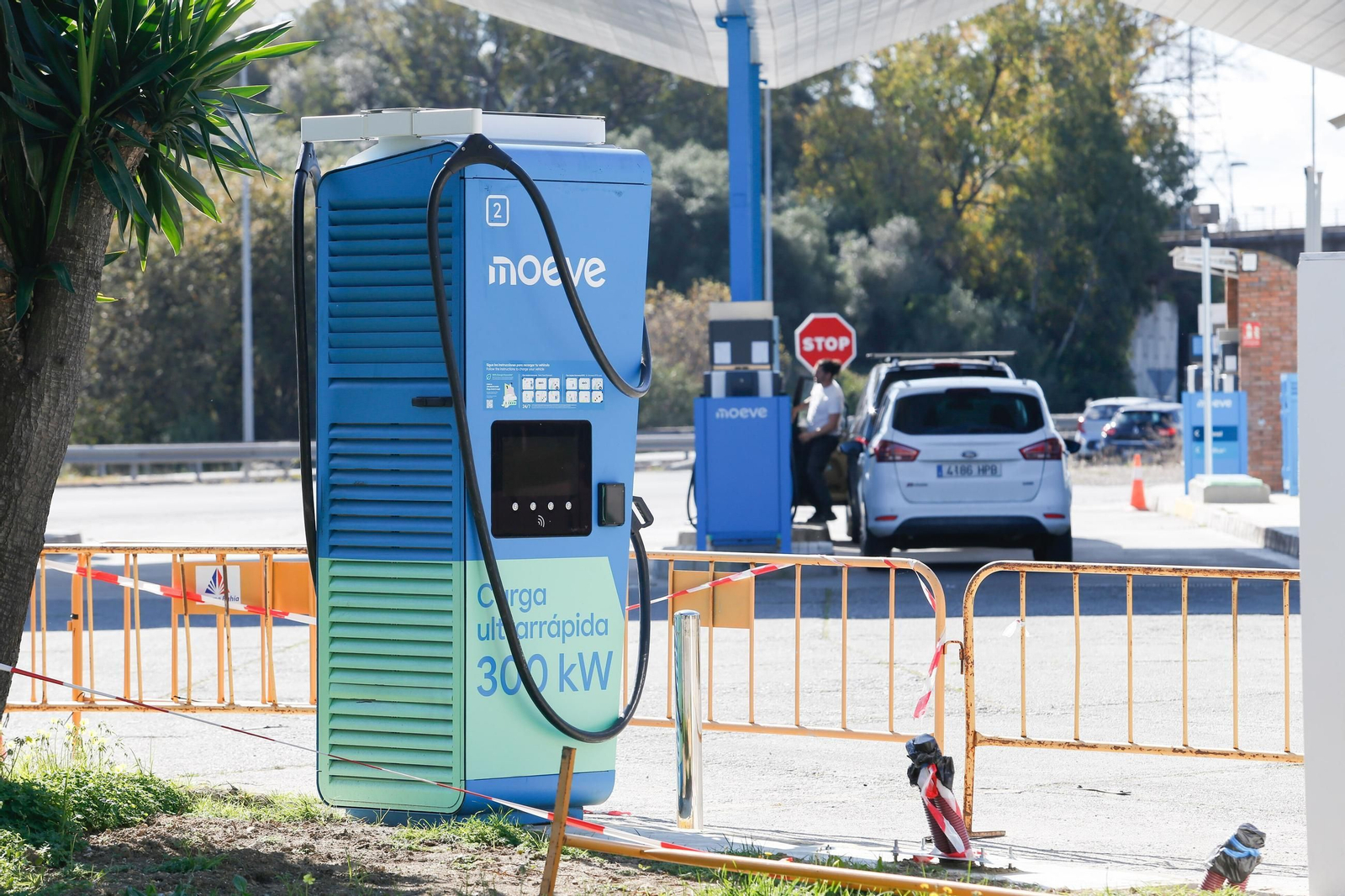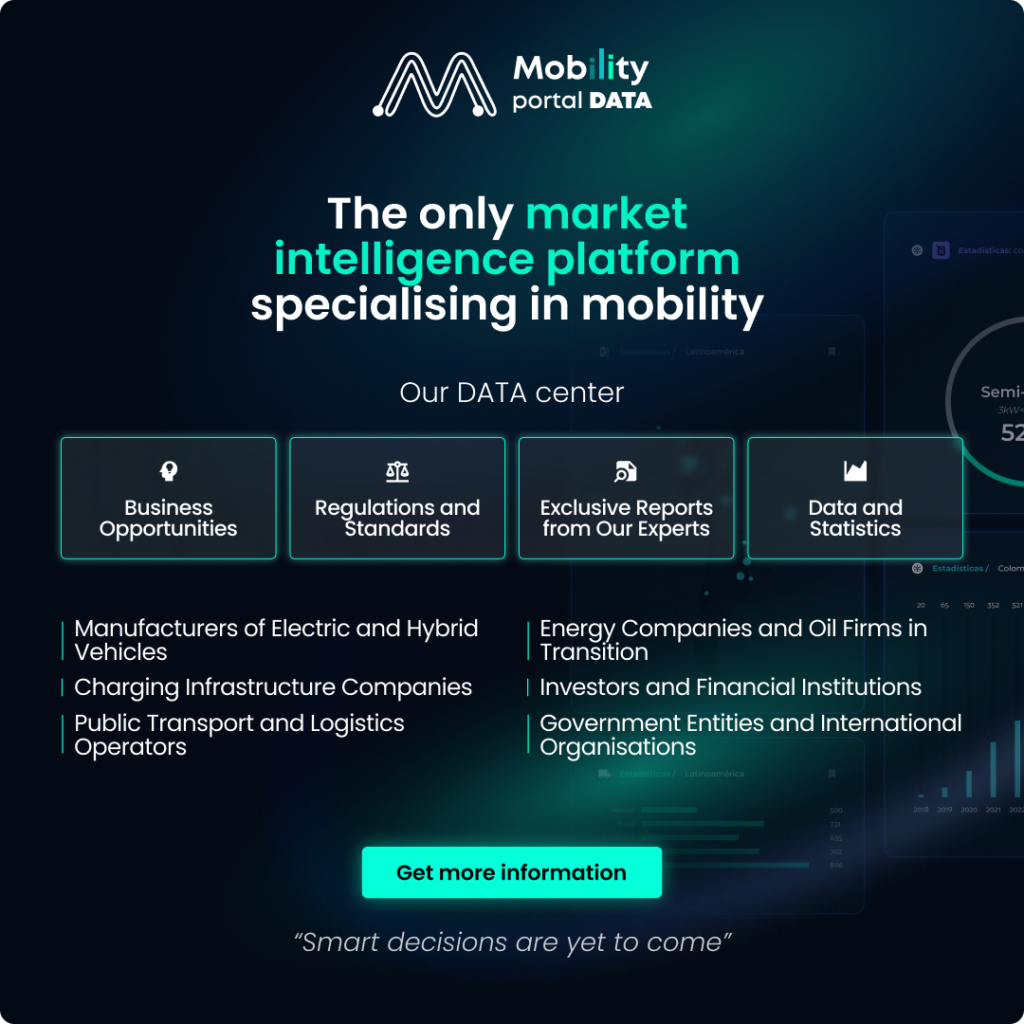Dhemax’s leadership outlines how to avoid common mistakes, and why total cost of ownership (TCO) is now often competitive—and even superior—to diesel.
They also explain how integrating planning and smart charging bridges the gap between theory and real-world operation.
The core message is clear: electrifying fleets isn’t just a vehicle swap.
Felipe Zegers, Chief Growth Officer at Dhemax, highlights the starting point during “Dhemax Day: Strategic Investment in Electric Fleets – Turnkey Solutions”, organised by Mobility Portal Latin America and the company.
“Fleet electrification isn’t just about replacing one vehicle with another—it involves multiple layers of analysis. A consultancy helps structure these variables and avoid costly errors,” he explains.
Infrastructure, operations, finance, technology, and people must all be integrated in the modelling process. When this doesn’t happen, the narrative emerges that “it’s not profitable.”
Zegers insists the discussion is no longer only about the environment: “Our goal is profitability—being green because it’s sustainable and because it saves money. In many cases, the TCO of an electric fleet is already better than that of a combustion fleet,” he says.
The company’s experience backs this up: “Since 2016, we’ve worked in more than 20 depots. The experience and data we’ve accumulated is incredibly valuable.”
The common mistake: underestimating the transformation
During the panel on infrastructure and operations, Dhemax CEO Andrés Barentin points out the most frequent misstep:
“The mistake is assuming an electric vehicle (EV) will operate just like a combustion ones. When you’ve got 100 or 200 vehicles, that’s a massive misconception,” he states.
The transition, he explains, demands new disciplines within the team and specialised external knowledge—something that doesn’t “self-generate”.
“Trying to do everything internally and ignoring the manageable variables only increases costs and delays projects.”
This cultural shift extends to the layout and hardware of the charging yard.
Barentin describes specific solutions for optimising space and safety:
“We showcase a solution with wall-mounted split chargers, very compact—about 60 kilos. The key is working with someone who can adapt to your requirements, not forcing your operation to adapt to a rigid solution.”
The key idea: design must follow how the fleet operates—not the other way around.
Where the business wins (or loses): OPEX, CAPEX and operational continuity
The element that ties design to economics is advanced smart charging. Zegers breaks it down into two areas:
OPEX (energy):
“If I connect all the buses at full power, I’ll create demand peaks and pay extra for them. With real-time planning and intelligent load balancing, I can deliver exactly the power each bus needs,” he says.
This dynamic control must respond to operations:
“If a bus is delayed, I automatically allocate more power because there’s less time to charge,” he adds.
CAPEX (equipment):
“If I know I can optimise power usage, I’ll need lower-capacity chargers, reducing CAPEX. Plus, optimised charging extends battery life and reduces degradation.”
He also highlights a frequently overlooked operational priority:
“Operational continuity is crucial. If a bus isn’t running and the service isn’t fulfilled, there are penalties and costs.”
In short, energy management isn’t an “add-on”: it defines asset availability, cost, and lifespan.
Bridging the gap between planning and execution: integration with Optibus
One of the major announcements during the webinar was the Dhemax–Optibus integration.
Zegers explains the rationale: “It was a natural fit. If planning doesn’t translate properly into reality, it’s a disaster. In 2025, via API, we’ll be closing the gap between plan and execution.”
From a product perspective, Santiago Severín explains the details:
“Optibus defines what and when to charge in the planning phase. Dhemax ensures how that charging is executed. We take the plan and convert it into exact power per connector, always respecting the site’s maximum load.”
The algorithm addresses specific pain points:
“It bridges the planning–execution gap… reducing demand peaks and ensuring buses are ready on time. Not every vehicle charges at full power—each has a tailored profile to be ready with just the right amount of energy,” Severín explains.
The platform also aims for proactive management:
“We move from a manual, reactive operation to tools that anticipate issues and emergencies, and add auditing so operators can check if the plan is being followed—or needs adjusting.”
Dhemax’s design philosophy: flexibility and scalability based on operation
Dhemax’s core philosophy is to adapt infrastructure to real operational needs.
Barentin translates this into solutions: wall-mounted units, split chargers, potential underground setups, or multi-bay configurations depending on usage patterns.
The key is to observe and measure operations—routes, downtime, charging windows—so that energy optimisation aligns with service schedules.
This aligns with Zegers’ economic warning:
“Anyone who knows how much each megawatt costs will immediately understand why some projects weren’t profitable—they were leaving money on the table.”
Avoiding over-dimensioning based on “general rules” and adjusting power to real needs directly impacts TCO—just as much as kWh pricing does.
What’s next for Dhemax: ultra-fast charging and new standards
The next leap, Barentin forecasts, is the mainstream adoption of ultra-fast charging and evolving standards for connectors and batteries.
“We’re already seeing ultra-fast charging strategies using CCS Combo with liquid cooling or even MCS directly. It’ll be a game-changer when we can charge a bus or lorry at 500 kW or 1 MW and deliver half the battery in 20–30 minutes.”
When? “We don’t think it’s more than two or three years away,” Dhemax anticipates.
In the meantime, Dhemax’s current “recipe for success” is already in place: comprehensive diagnostics, yard design aligned with operations, dynamic smart charging, and orchestration between planning and execution.
As Severín summarises: “The value comes when each bus gets exactly the energy it needs to complete its service—no more, no less.”
READ MORE
-
Hellonext supplies charging equipment for the largest EV hub in the Iberian Peninsula
The facility, developed by Galp and BMW Group at Intu Xanadú (Madrid), features 116 charging points and a total capacity of over 3.6 MW.
-
GRIDSERVE begins building its first public electric HGV charging hubs
These new locations form the foundation of the Electric Freightway – a nationwide programme designed to give fleet operators access to high-power public charging designed specifically for electric HGVs.
-
Sector eMobility ya destina 1.290 millones de euros a puntos de recarga en España y va por más
AEDIVE (Asociación Empresarial para el Desarrollo e Impulso de la Movilidad Eléctrica) ha elaborado un informe sobre la inversión en infraestructuras de recarga de acceso público en España que estima el total de la inversión acumulada en 1.290 millones de euros (hasta octubre de 2025). La Asociación ha elaborado este informe para arrojar luz sobre el esfuerzo…










